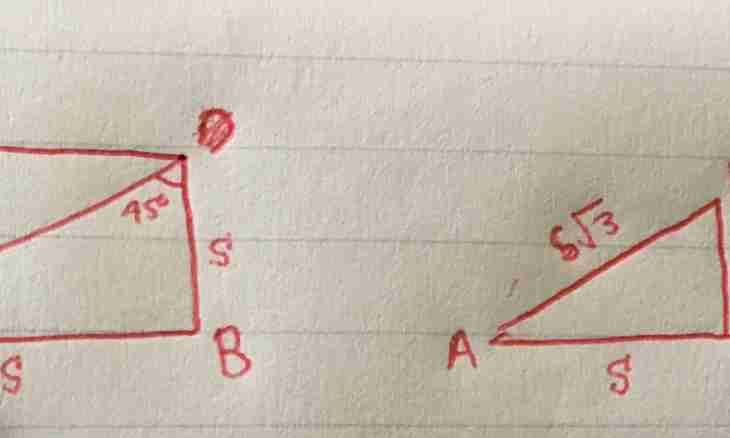The triangle is the part of the plane limited to three pieces of straight lines having in pairs on one general end. Pieces of straight lines in this definition are called the parties of a triangle, and their general ends – triangle tops. If two parties of a triangle are equal, then call it isosceles.
Instruction
1. The basis of a triangle is called its third party of AC (see the drawing), perhaps other than the side equal parties of AB and BC. Let's give several ways of calculation of length of the basis of an isosceles triangle. First, it is possible to use the theorem of sine. It says that the parties of a triangle are directly proportional to value of sine of opposite corners: a / sin α = with / sin β. From where we receive that c = a * sin β/sin α.
2. Let's give an example of calculation of the basis of a triangle according to the theorem of sine. Let a = b = 5, α = 30 °. Then according to the theorem of the sum of corners of a triangle β = 180 ° - 2 * 30 ° = 120 °. with = 5 * sin 120 ° / sin 30 ° = 5 * sin 60 ° / sin 30 ° = 5 * √3 * 2/2 = 5 * √3. Here for calculation of value of a sine of the angle β = 120 ° we used a reduction formula according to which sin (180 ° - α) = sin α.
3. The second way to find the triangle basis – by means of the theorem of cosines: the square of the party of a triangle is equal to the sum of squares of two other parties minus the doubled work of these parties and the cosine of the angle concluded between them. We receive that c^2 basis square = a^2 + b^2 – 2 * a * b * cos β. Further we find length c basis, taking a square root from this expression.
4. Let's review an example. Let to us the same parameters, as in the previous task are set (see Paragraph 2). a = b = 5, α = 30 °. β = 120 °. с^2 = 25 + 25 - 2 * 25 * cos 120 ° = 50 - 50 * (-cos 60 °) = 50 + 50 * ½ = 75. In this calculation we also applied a reduction formula to finding of cos 120 °: cos (180 ° - α) = - cos α. We take a square root and we receive value c = 5 * √3.
5. Let's consider a special case of an isosceles triangle – a rectangular isosceles triangle. Then on Pythagorean theorem we at once find c basis = √ (a^2 + b^2).

